As solar activity reached a maximum in late 1988 and early 1989, there was a corresponding increase in auroral activity. Unfortunately, in the 6 years since the telephone network of alerting observers had been set up, several people had moved away or lost interest, and so it had ceased to exist. There had been other attempts to set up an alert network, however these were still not very efficient. The Ionspheric Prediction Service had begun offering alerts by email, however few observers had access to this new form of communication, and the alerts were not yet very reliable. However they did serve a useful purpose in giving some warning. In December 1988, I had received such an alert and as a result managed to observe a very prominent aurora. It was visible for the entire night and I took two rolls of photographs, only to find later that the camera had been jammed on f/16! As a result no trace of the aurora was visible. :-(
Then n March 23, 1989, the sky erupted again, this time without any alert, and it was almost by accident that I managed to observe the display.
Early that evening I had received a phone call from a fellow member of the astronomy club, who asked about going observing that night. I did not particularly want to go, but after some persuasion, he convinced me. When he arrived at my home about 30 minutes later, he casually asked if I had been watching the aurora outside. After he dusted off the bootprints I had left when I ran outside, we loaded up my car with telescopes and cameras, and headed south away from the light pollution of the city. About 30 minutes south of the city, we set up in a dark area that gave us a superb view of the aurora.
Over the next few hours we watched as the aurora fluctuated from being hardly visible to dominating the entire southern half of the sky with a brilliant red glow studded with pulsating rays. Although we finished observing near midnight, the aurora was still very active the following dawn.
During the time we were observing the aurora, I exposed a full roll of slide film. On collecting the photographs a week later, my relief at finding they had worked out was substantial after the previous disaster. One of the photographs was published in 'Astronomy' and several were published in 'Southern Astronomy', along with an article that I wrote. 'The Aurora Australis.' Southern Astronomy Vol 3 No 4 1990 pp2-5. One of the photographs even made the front cover.
Below are a few of the photographs of the aurora.
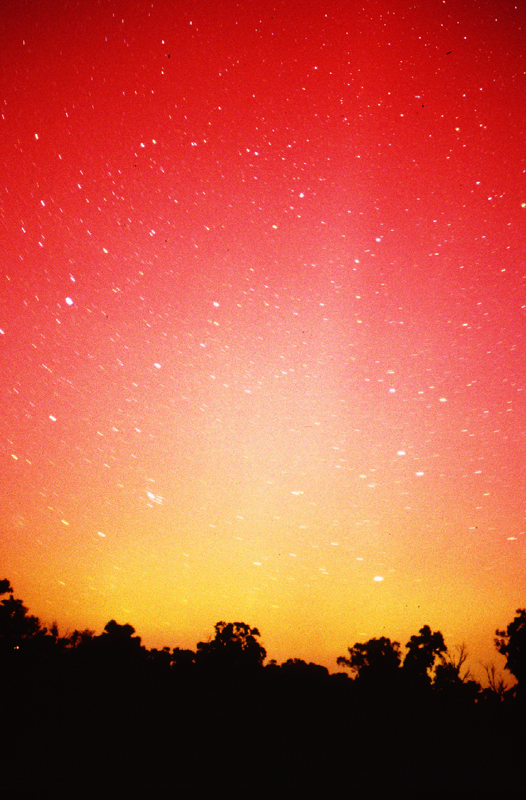
21:33 UT
90 seconds exposure, Kodak Ektachrome 400 slide film.
50mm f/2 Nikkormat lens.
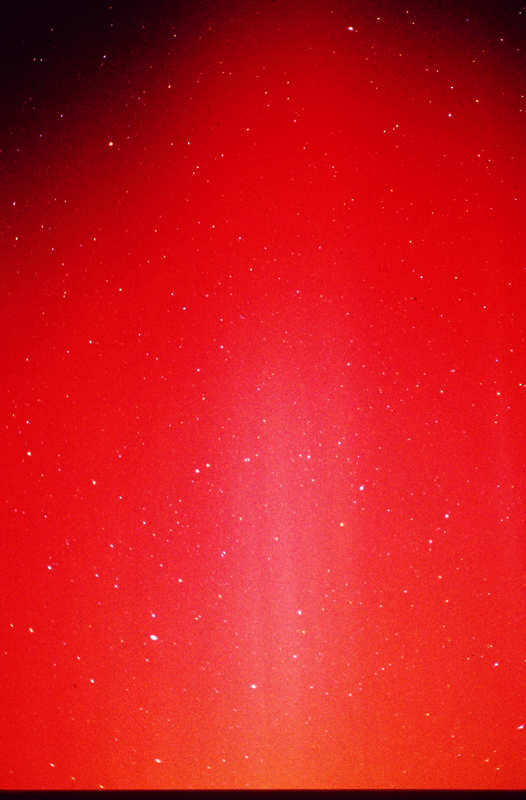
21:35 UT
60 seconds exposure, Kodak Ektachrome 400 slide film.
50mm f/2 Nikkormat lens.
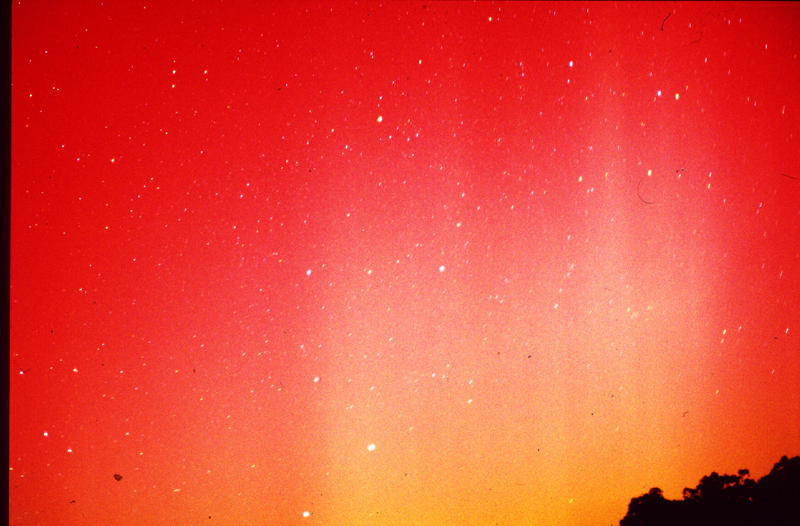
21:45 UT
120 seconds exposure, Kodak Ektachrome 400 slide film.
50mm f/2 Nikkormat lens.
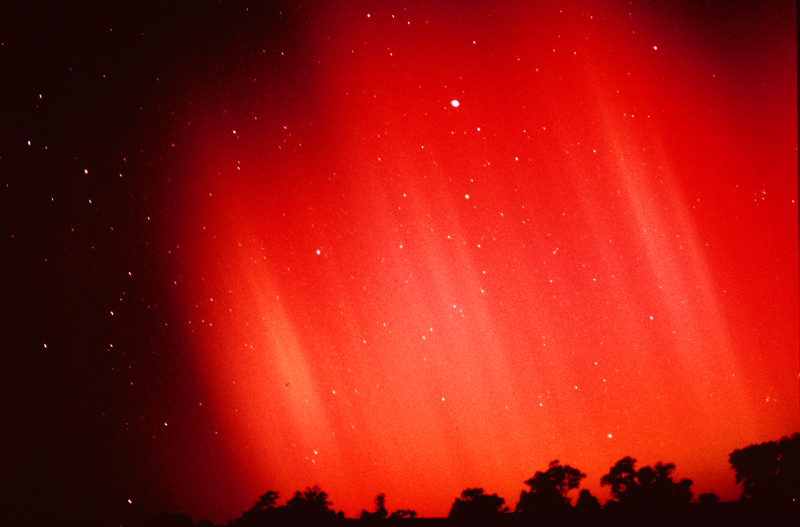
22:18 UT
60 seconds exposure, Kodak Ektachrome 400 slide film.
50mm f/2 Nikkormat lens.
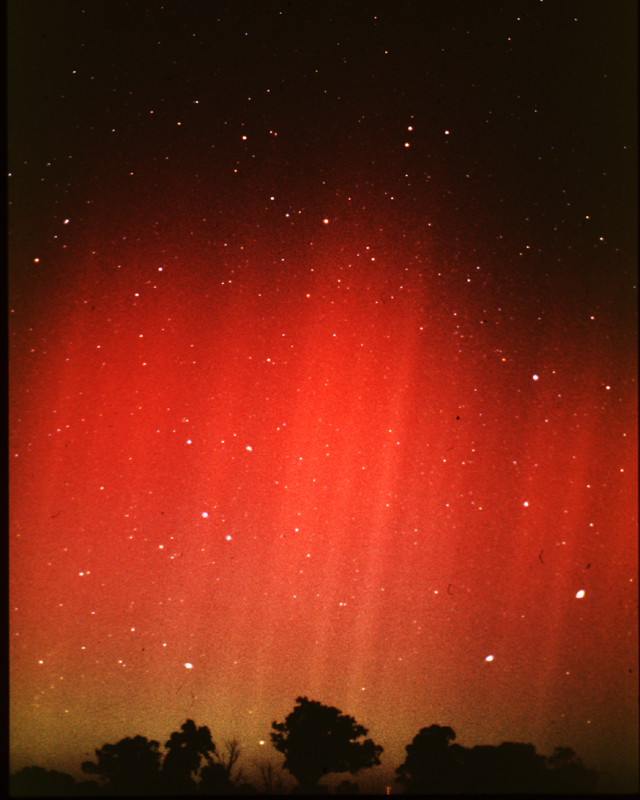
22:24 UT
90 seconds exposure, Kodak Ektachrome 400 slide film.
50mm f/2 Nikkormat lens.
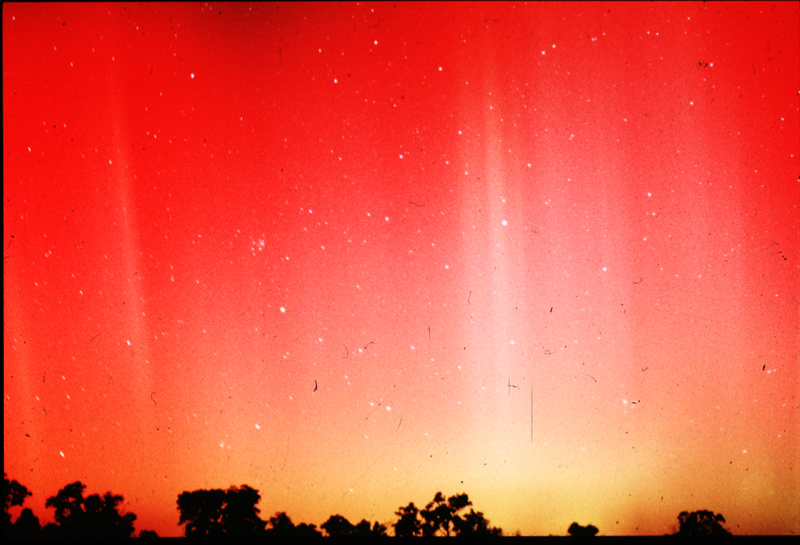
22:45 UT
45 seconds exposure, Kodak Ektachrome 400 slide film.
50mm f/2 Nikkormat lens.
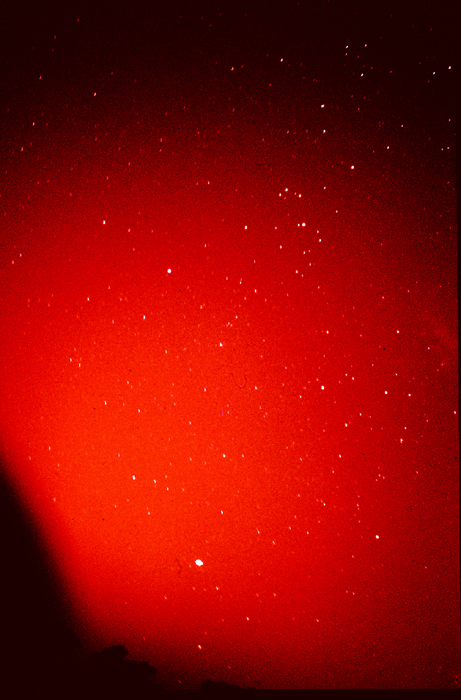
23:25 UT
120 seconds exposure, Kodak Ektachrome 400 slide film.
50mm f/2 Nikkormat lens.






